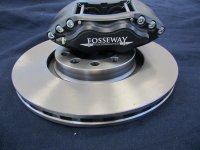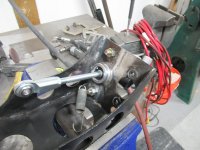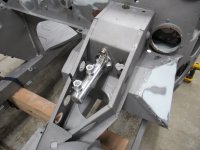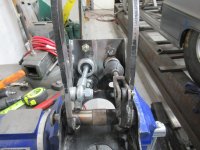I'm thinking about converting my Longbridge model from a single to a dual circuit brake system.
Does anyone have any advice?
Is there an alternative master cylinder to the expensive Healey one?
Would it also be necessary to instal a brake servo?
Any help/advice would be useful
Does anyone have any advice?
Is there an alternative master cylinder to the expensive Healey one?
Would it also be necessary to instal a brake servo?
Any help/advice would be useful

 Hi Guest!
Hi Guest!

 smilie in place of the real @
smilie in place of the real @
 Pretty Please - add it to our Events forum(s) and add to the calendar! >>
Pretty Please - add it to our Events forum(s) and add to the calendar! >> 






